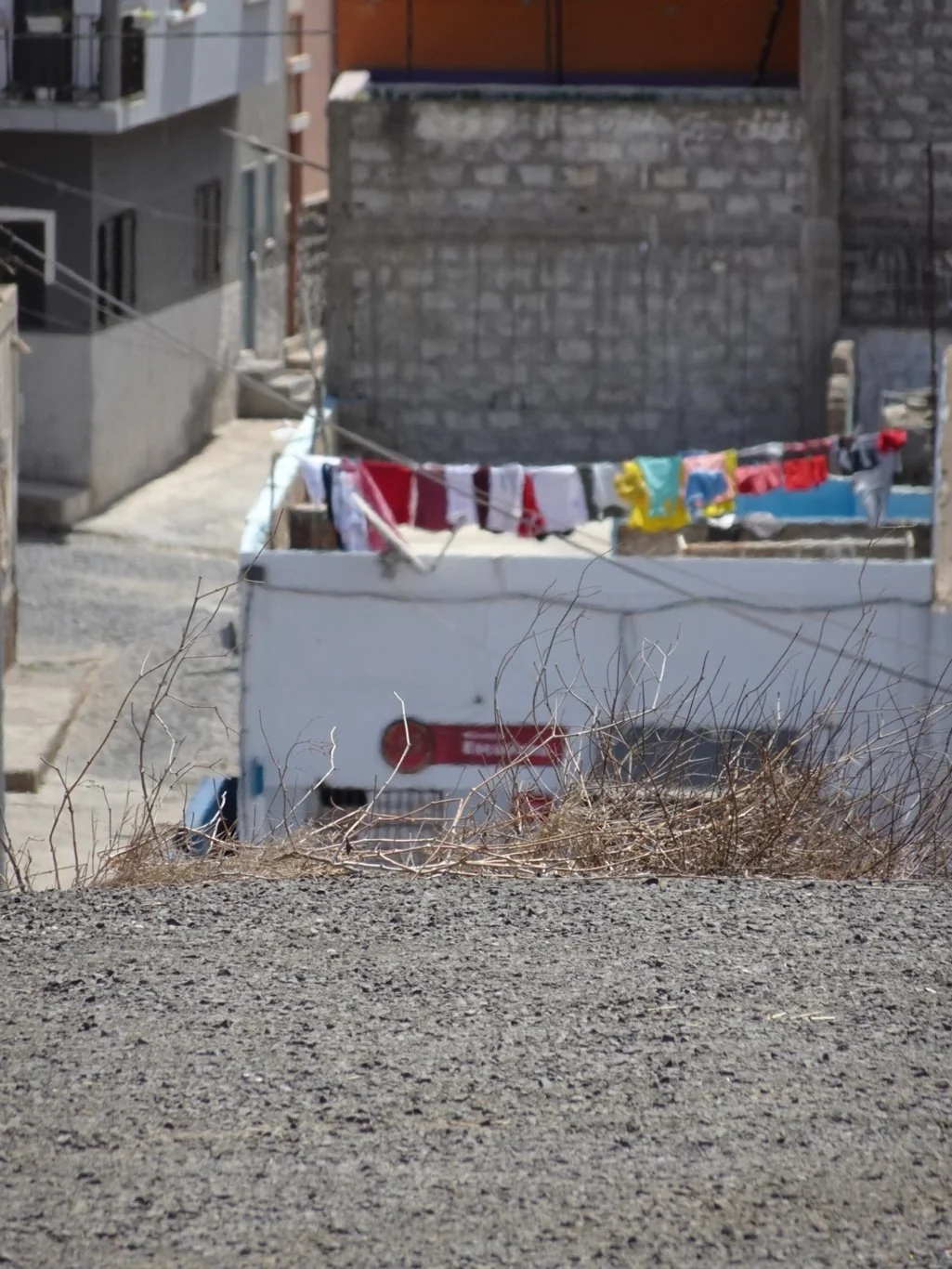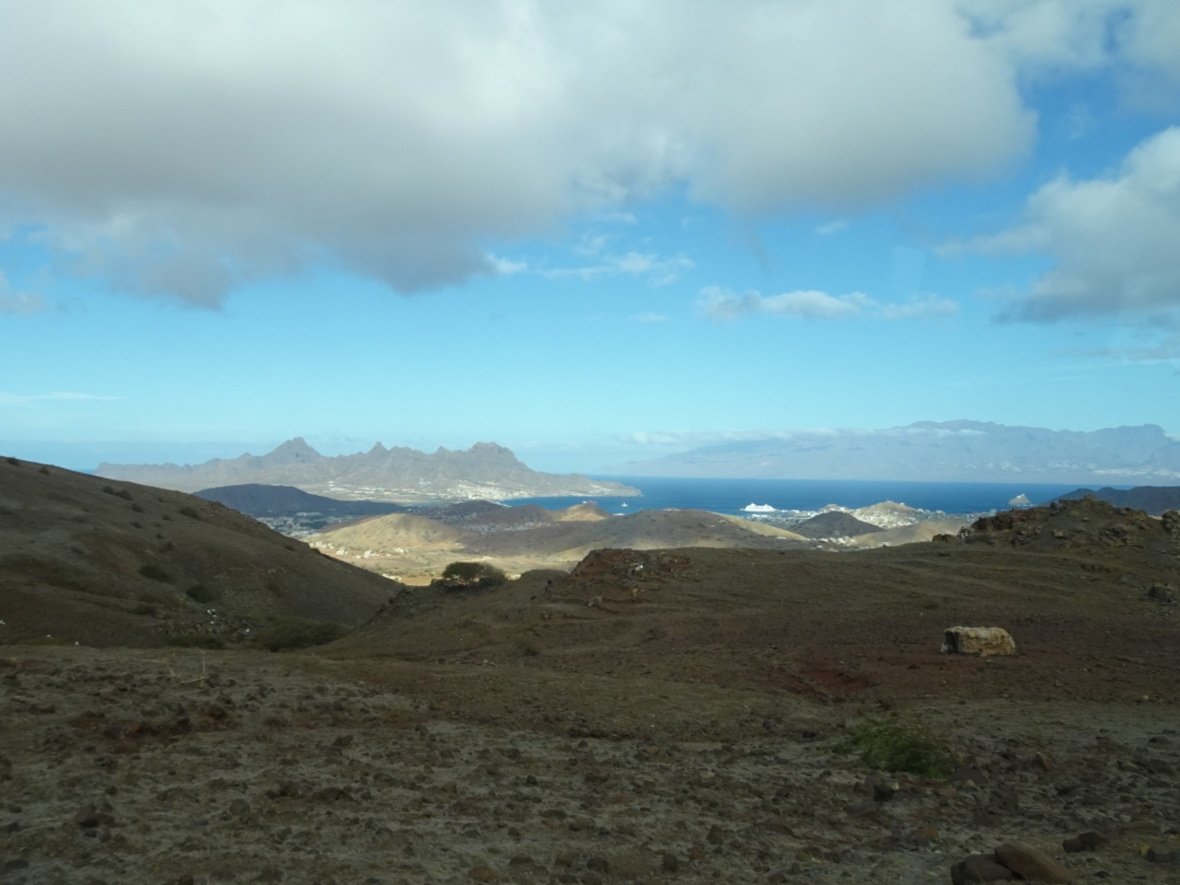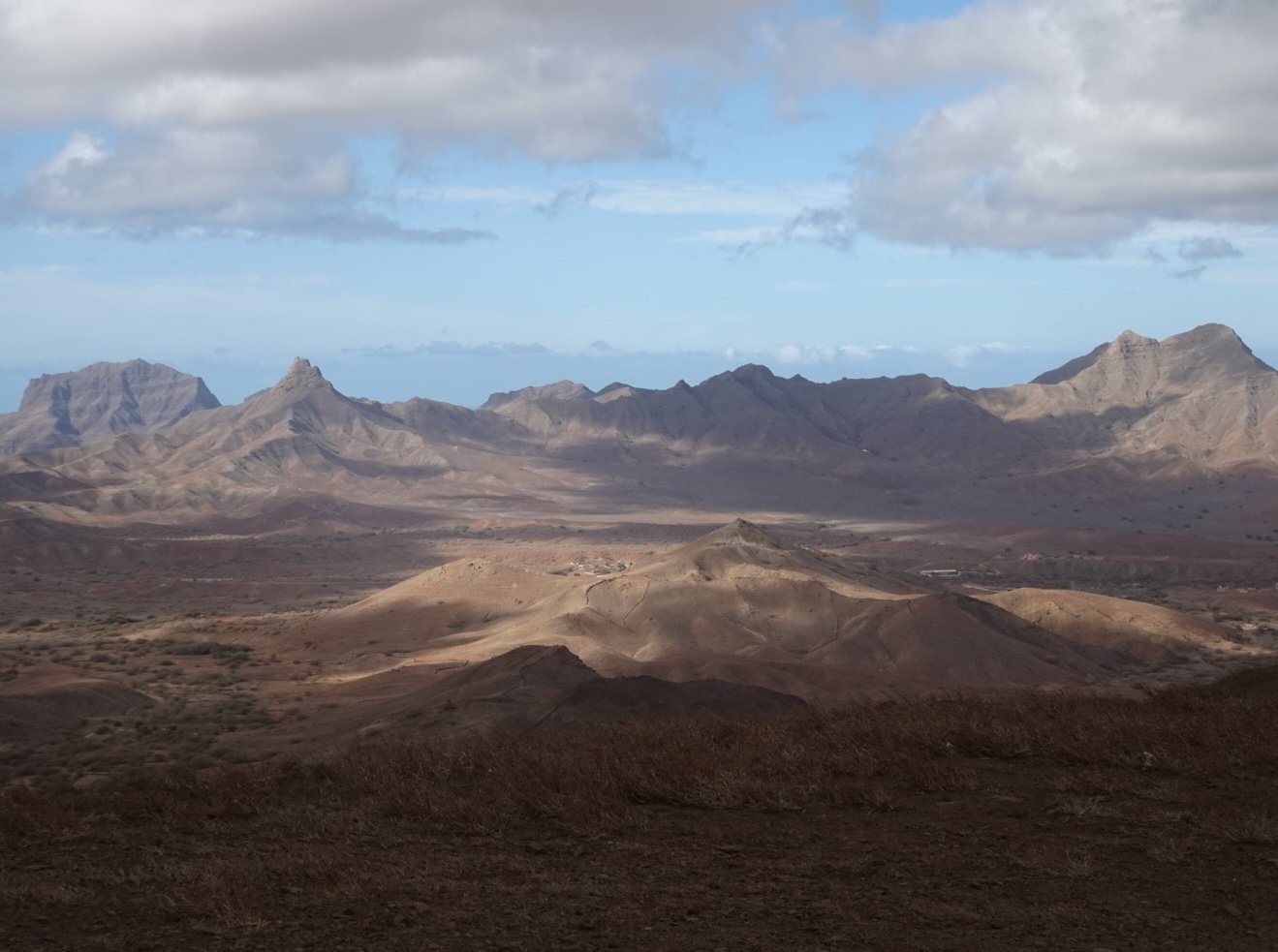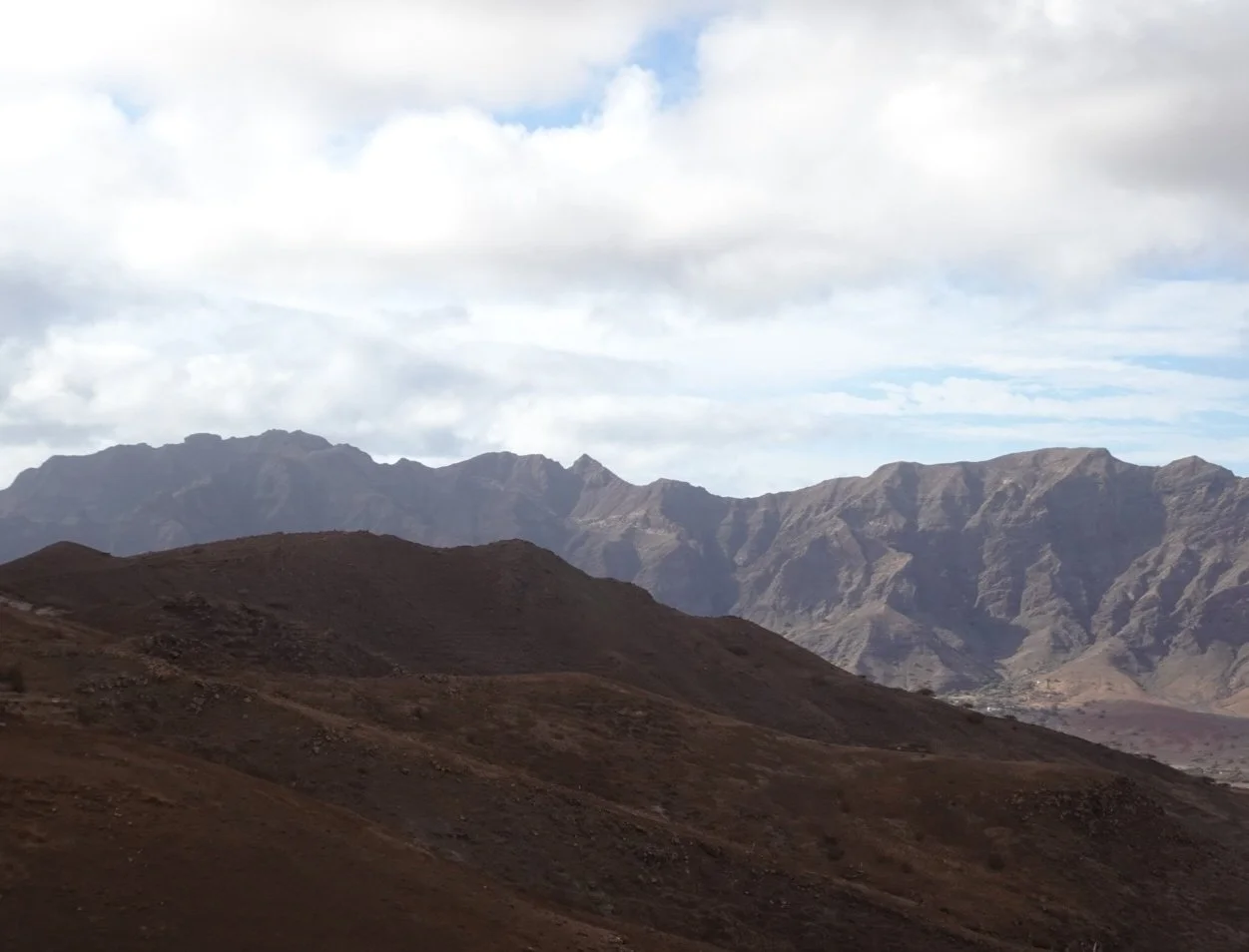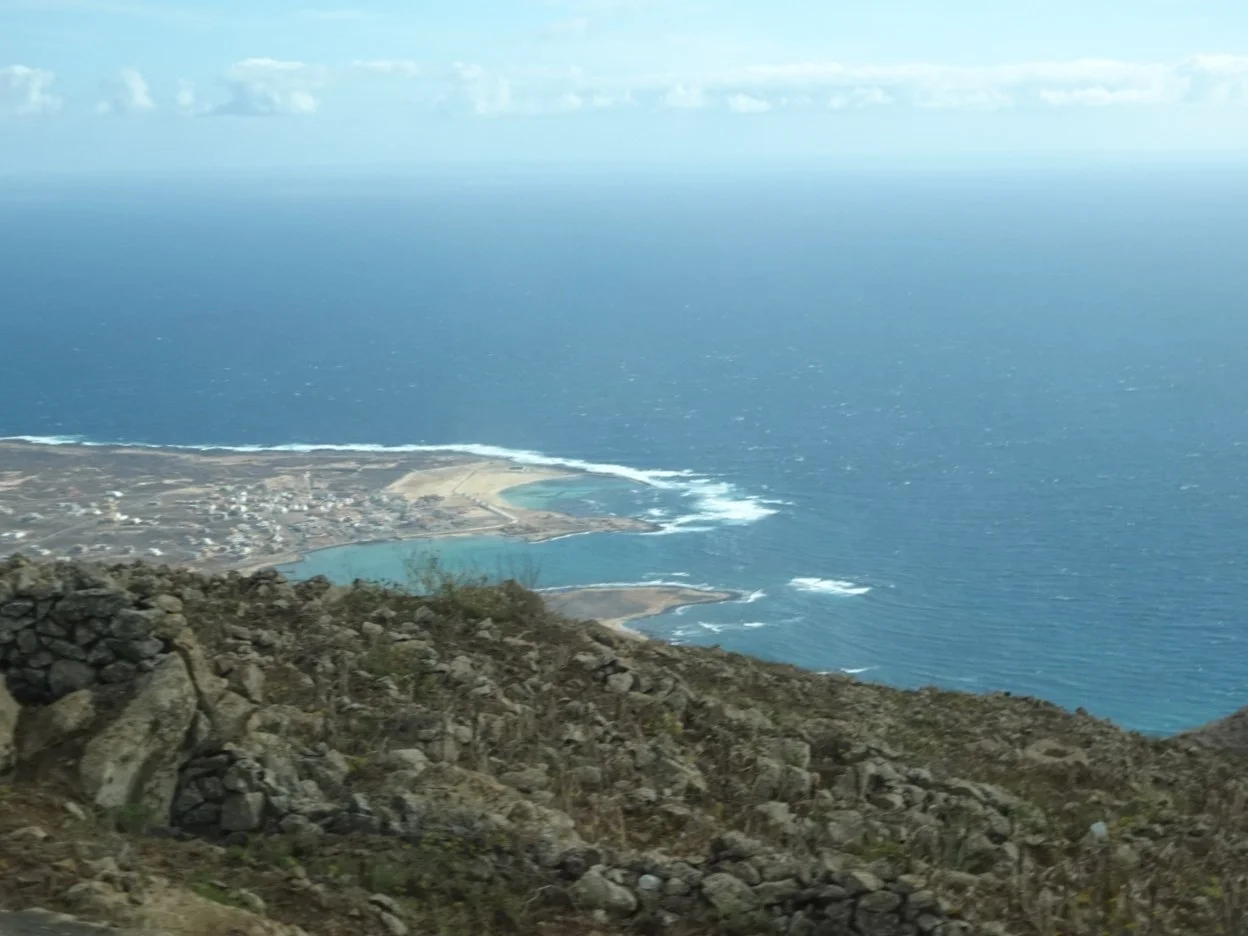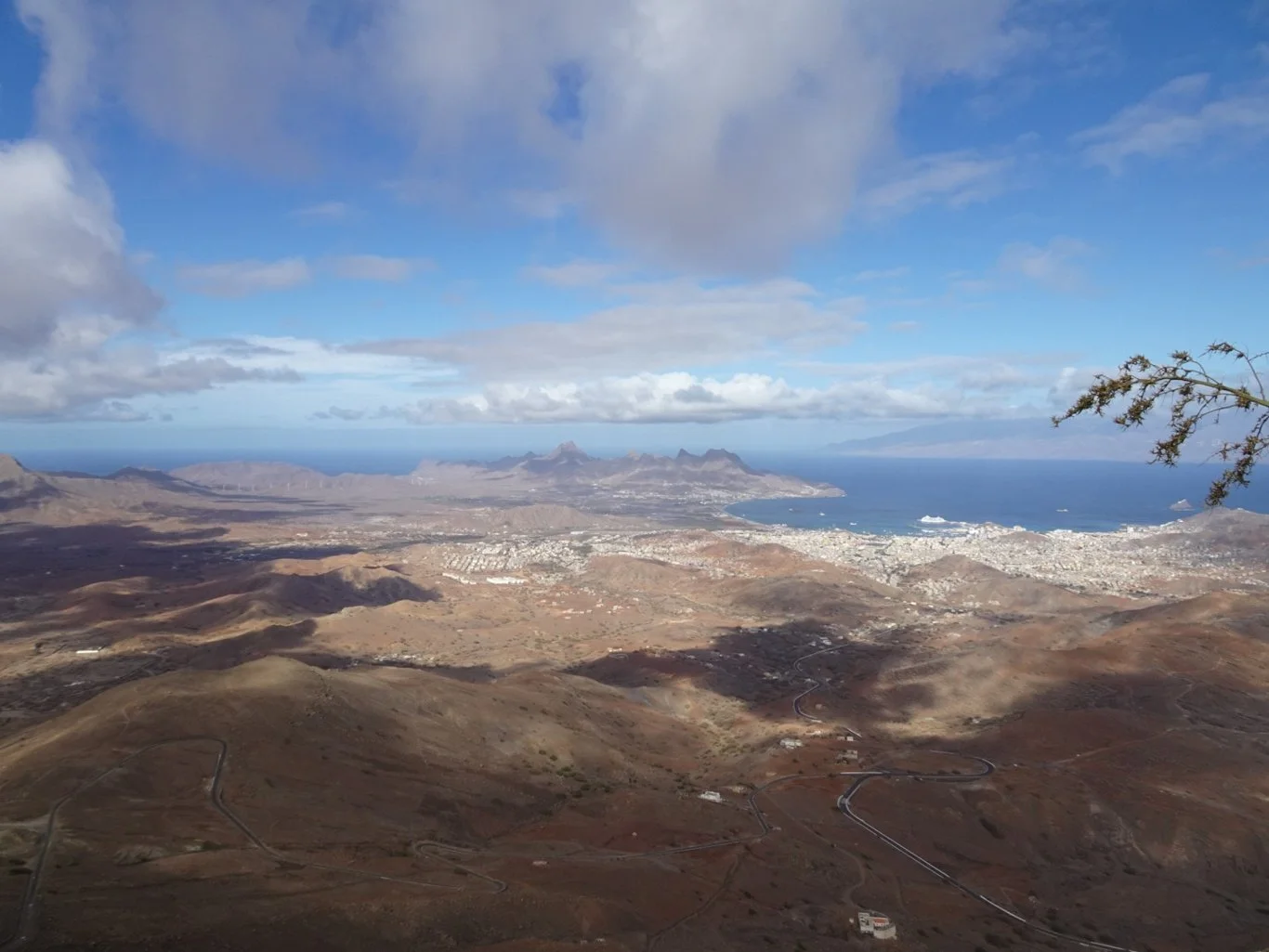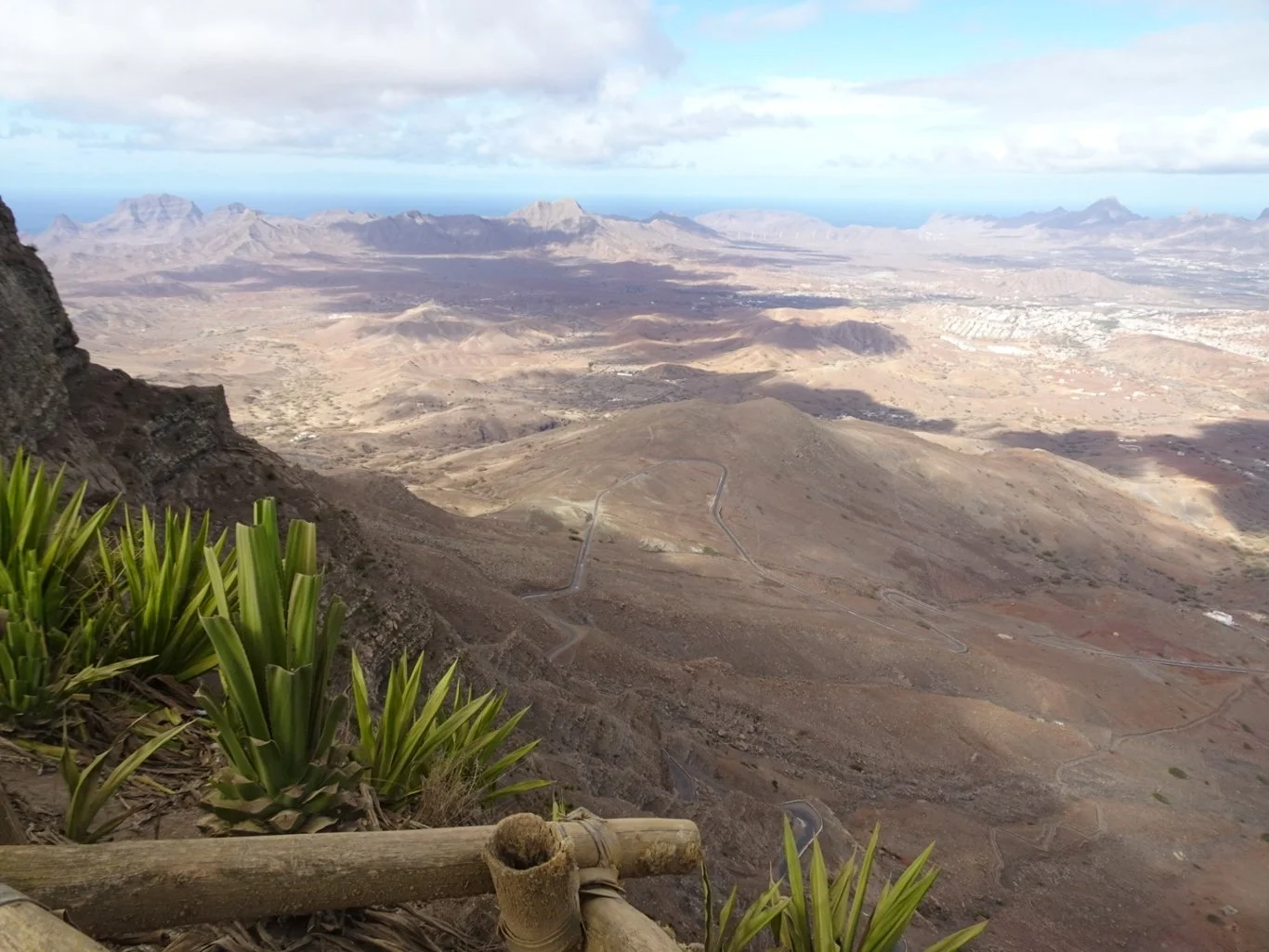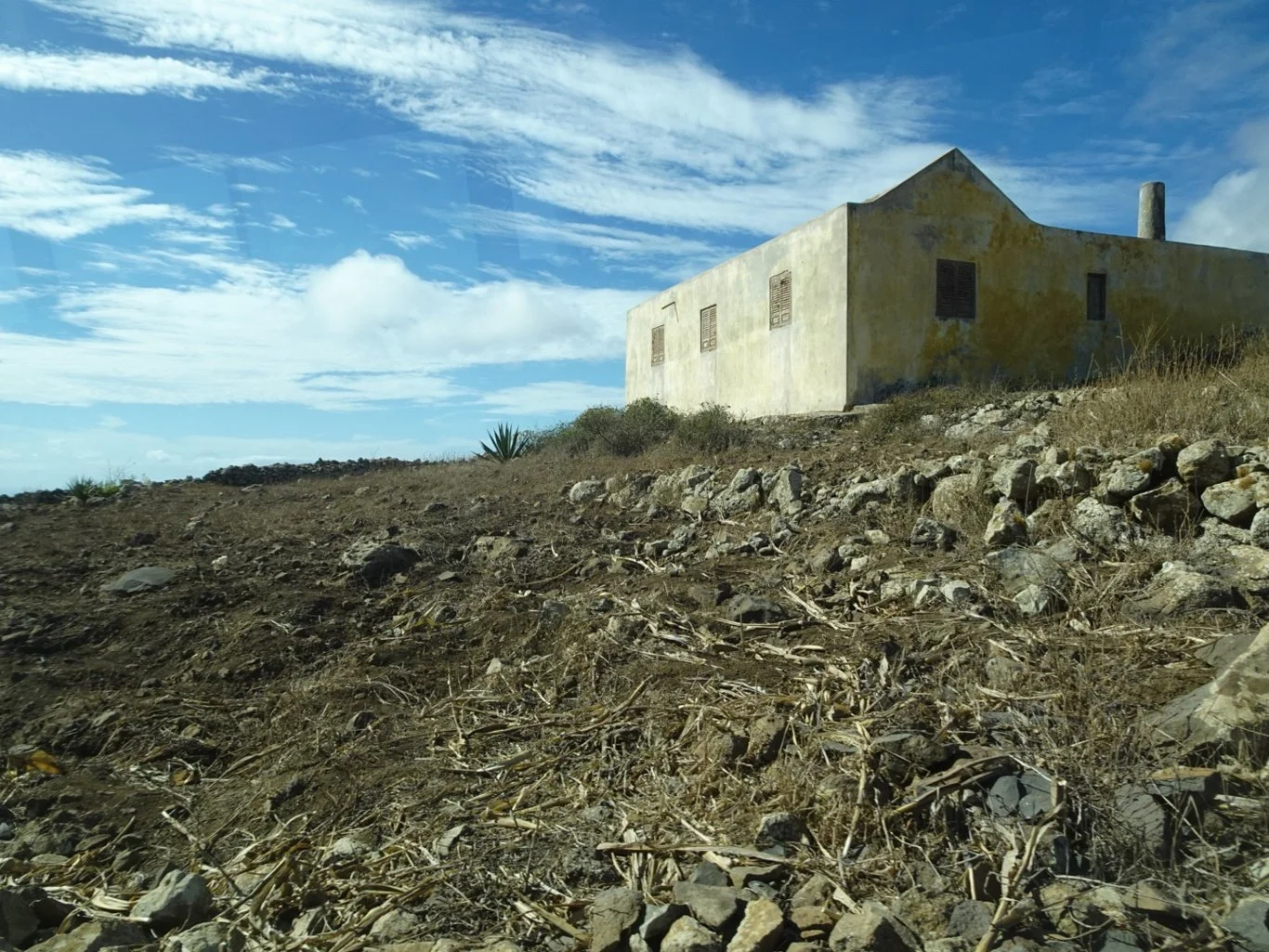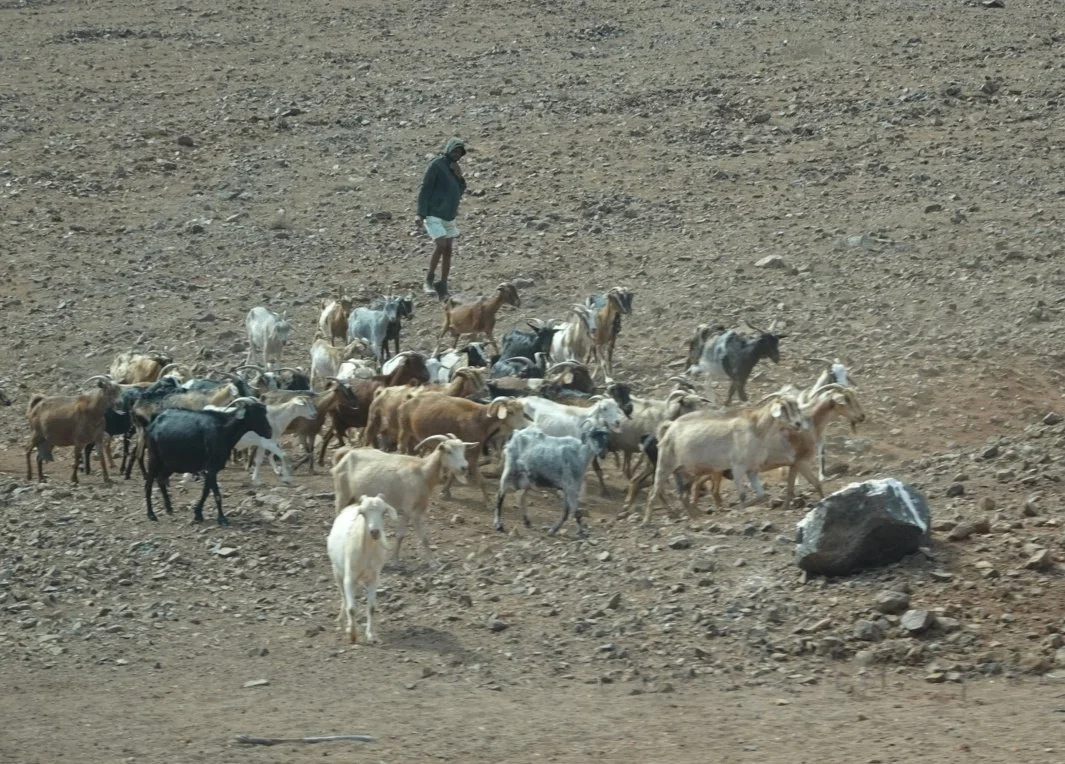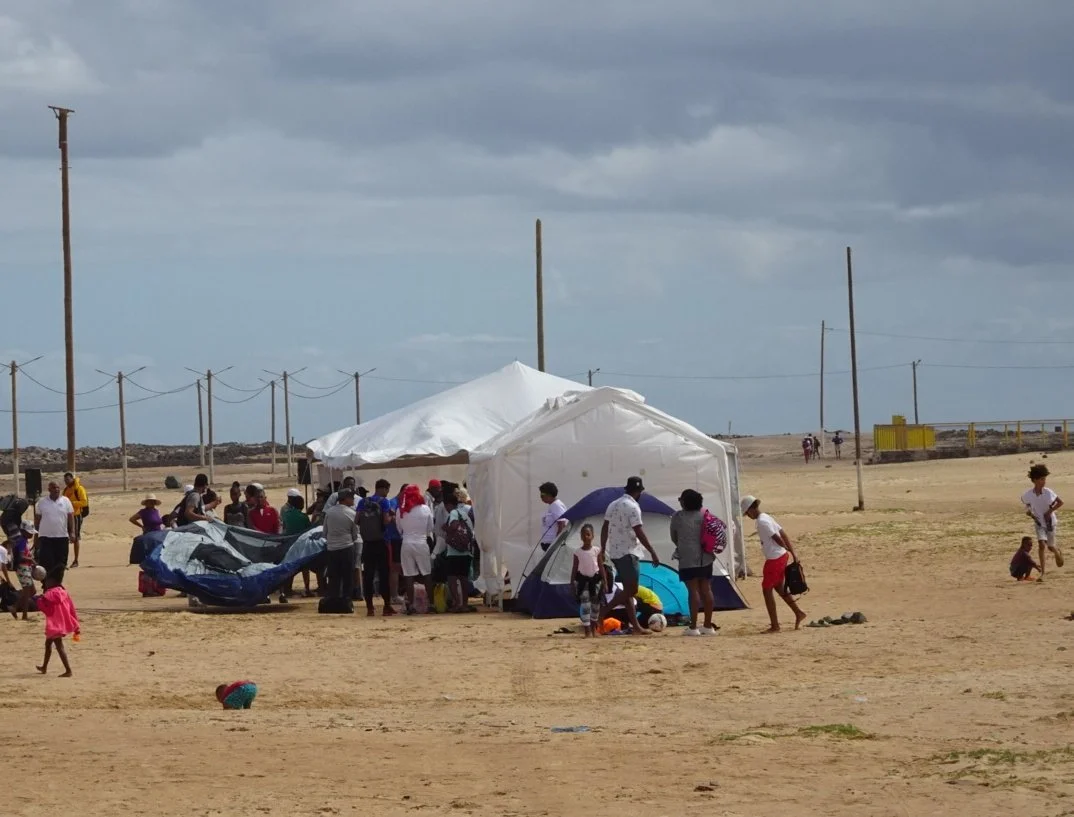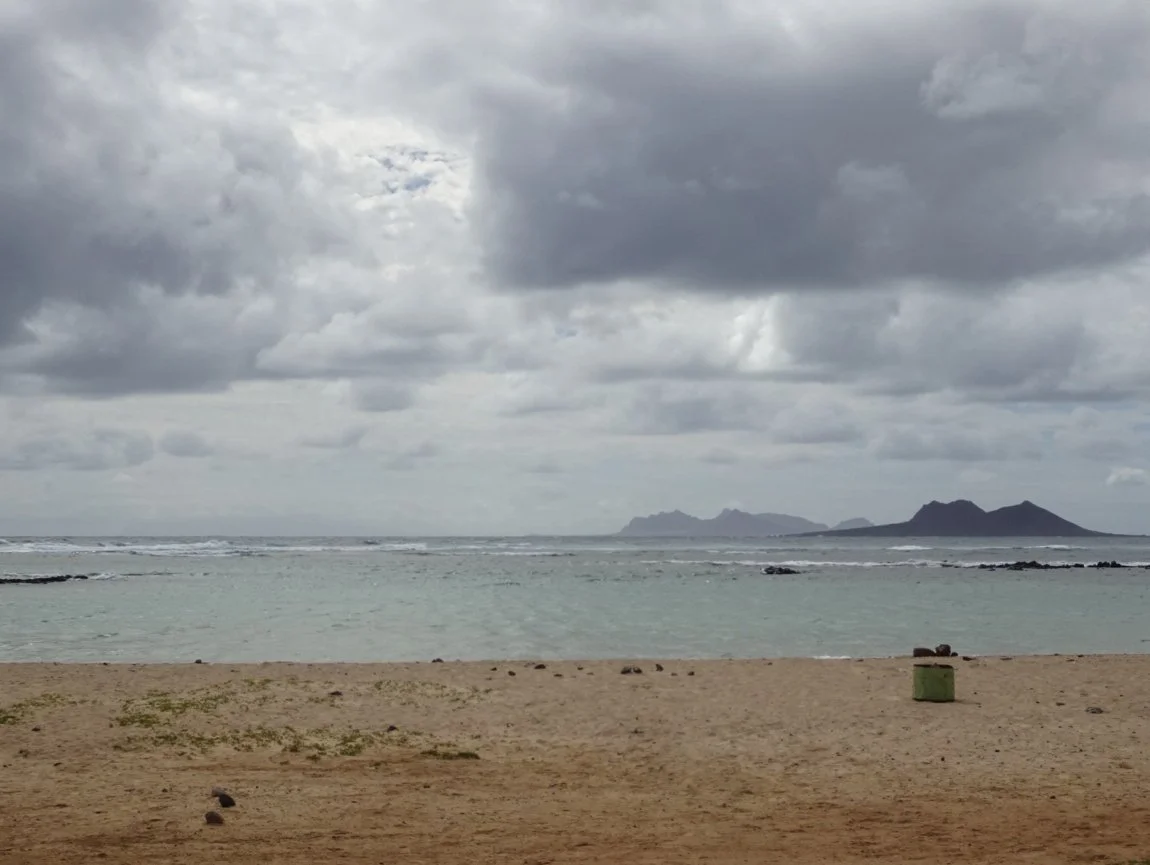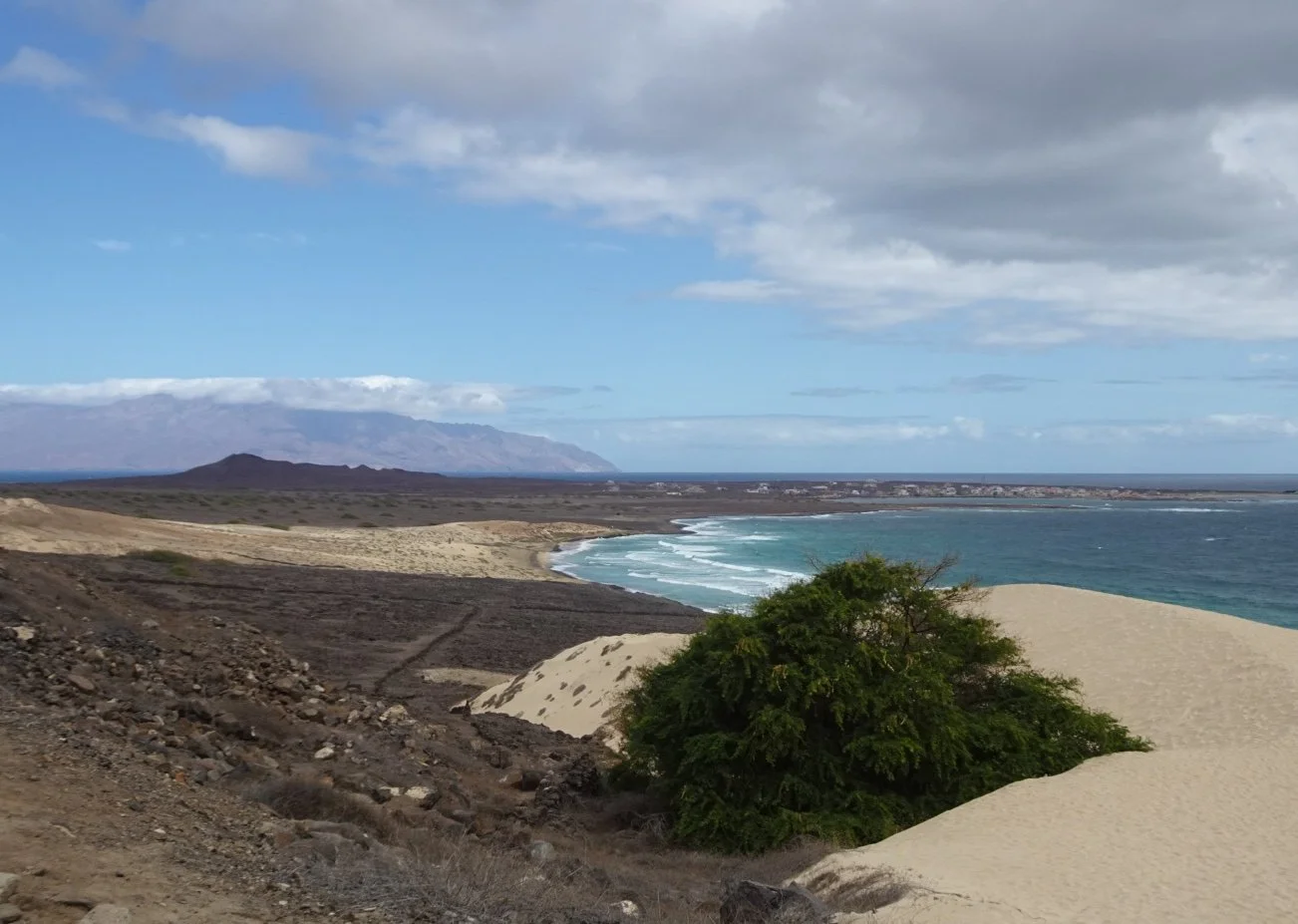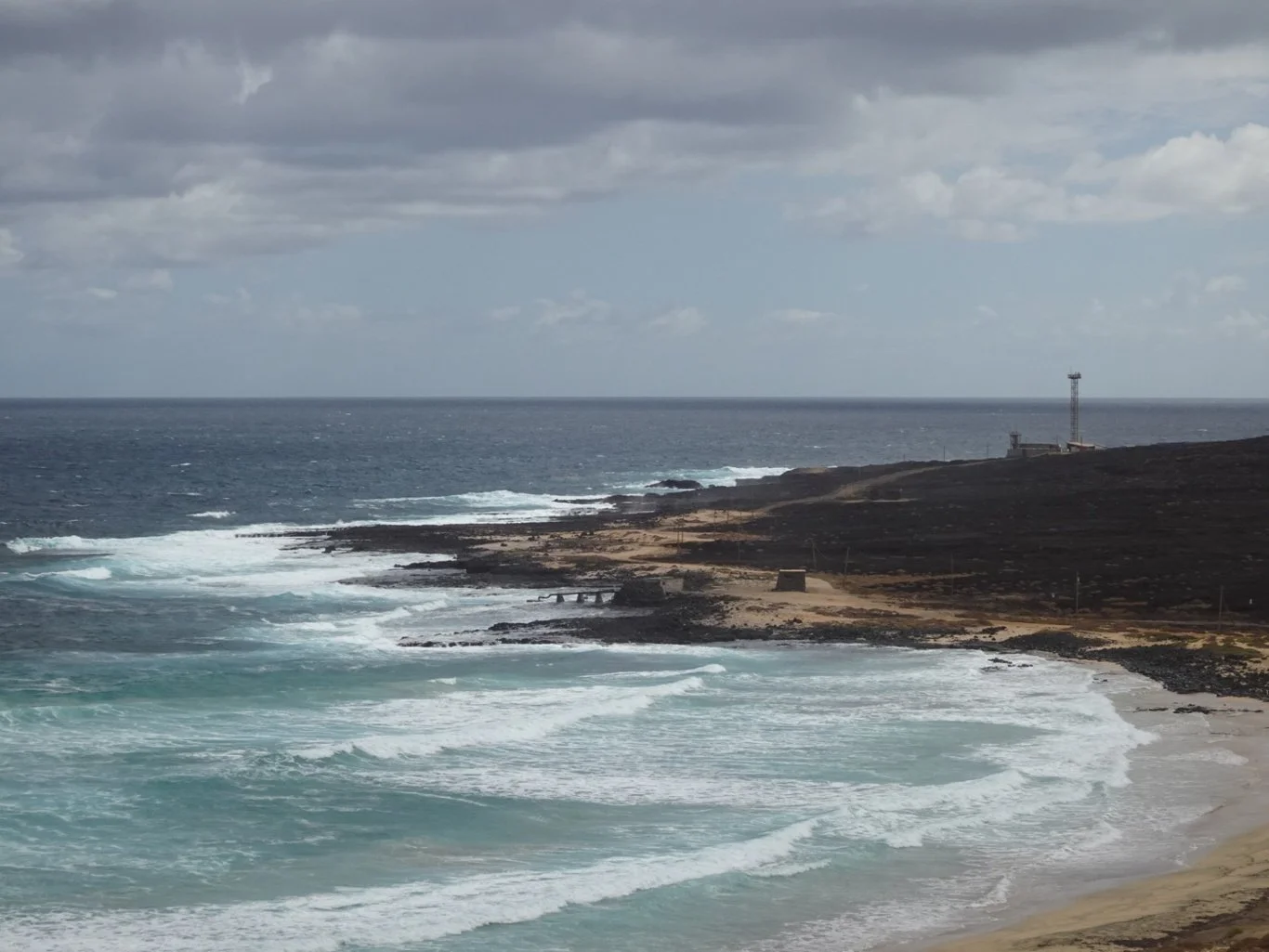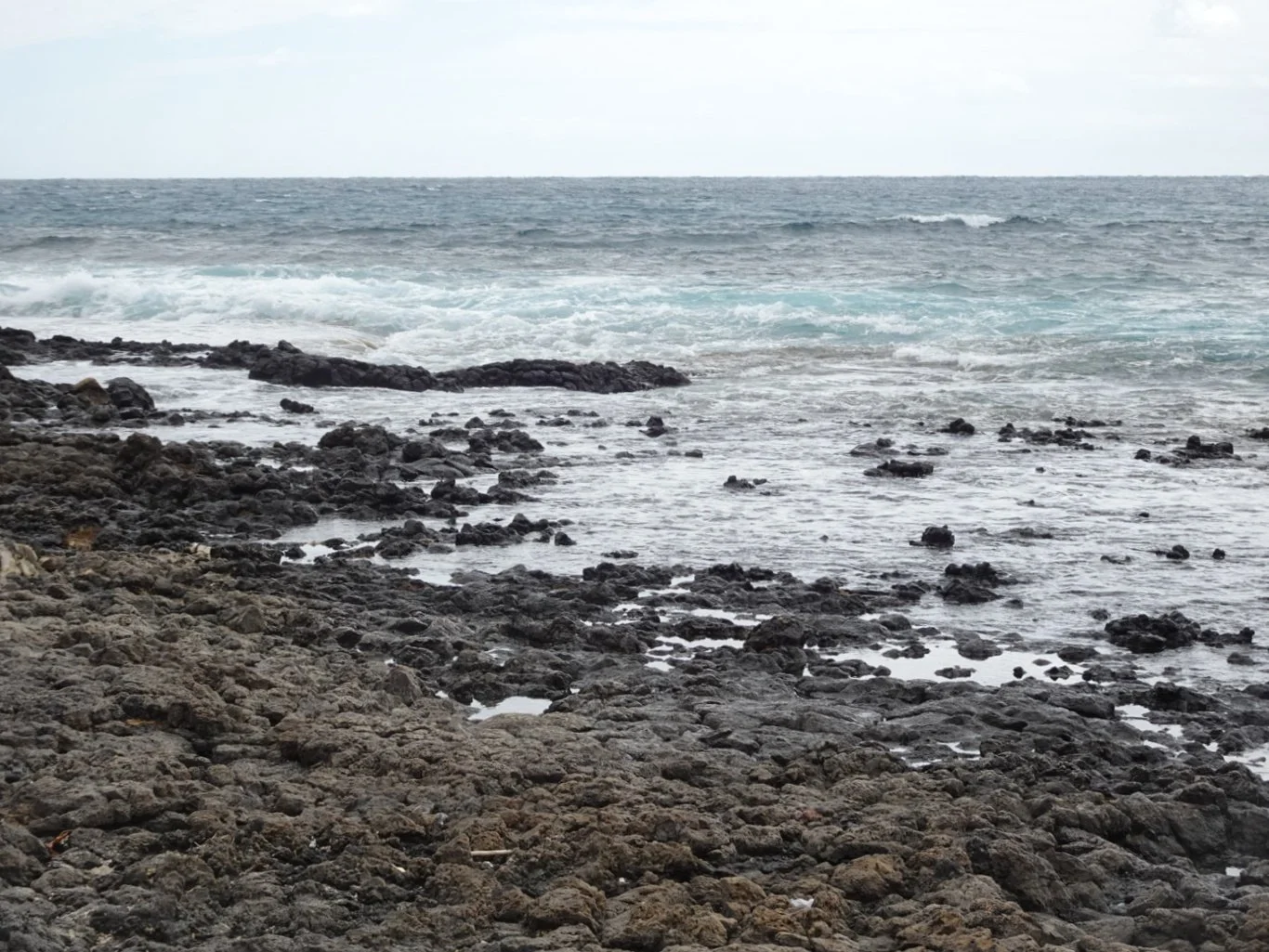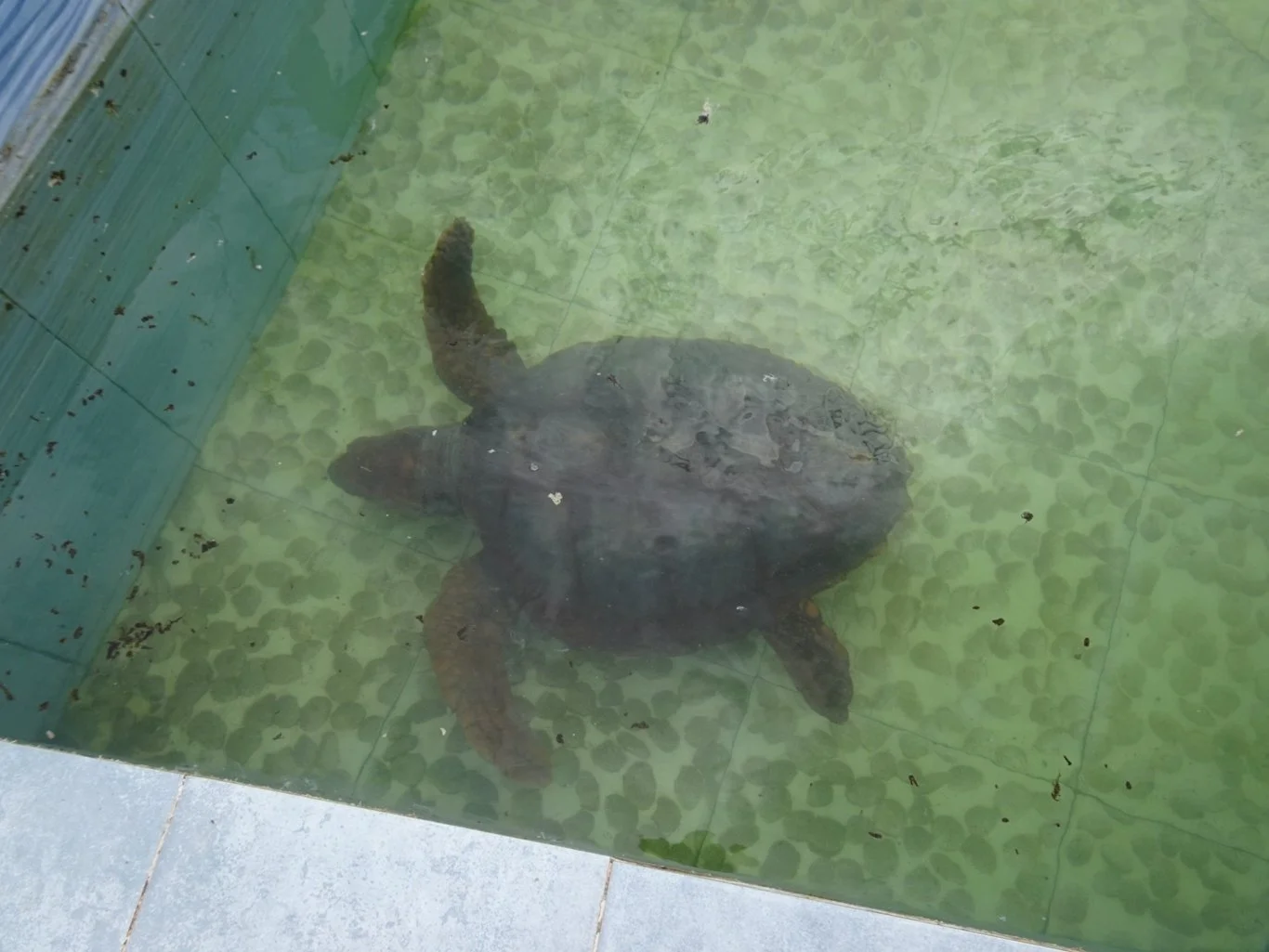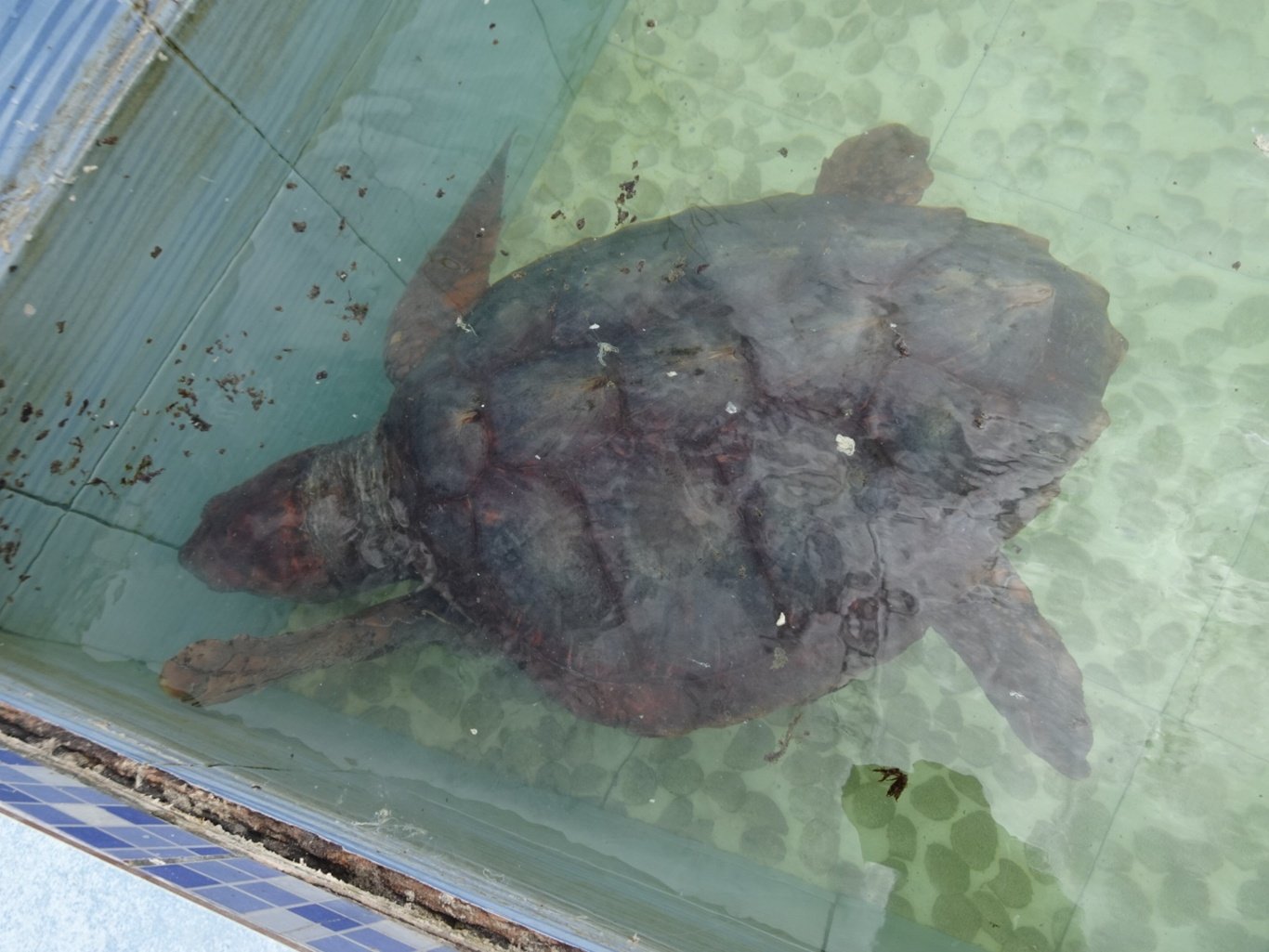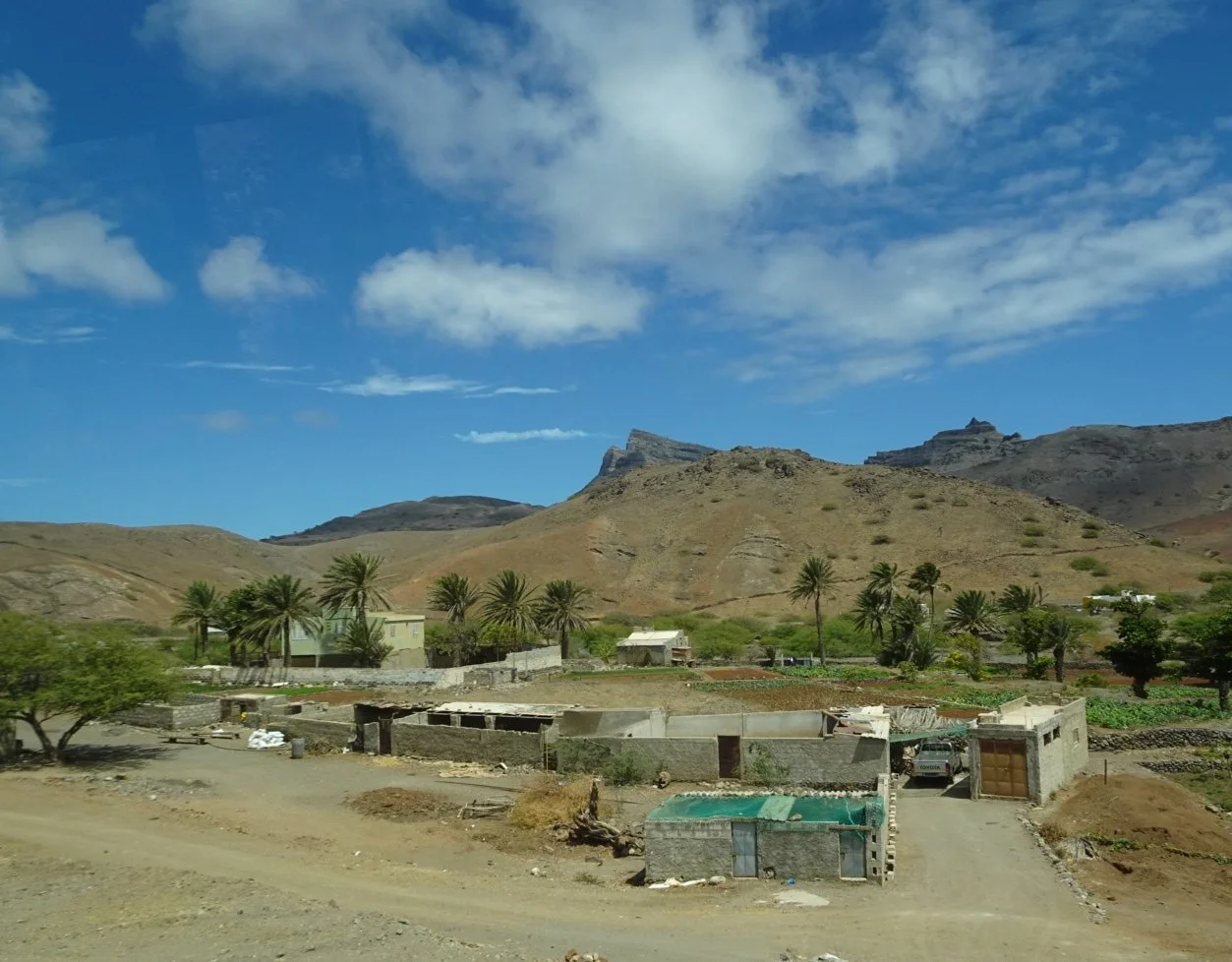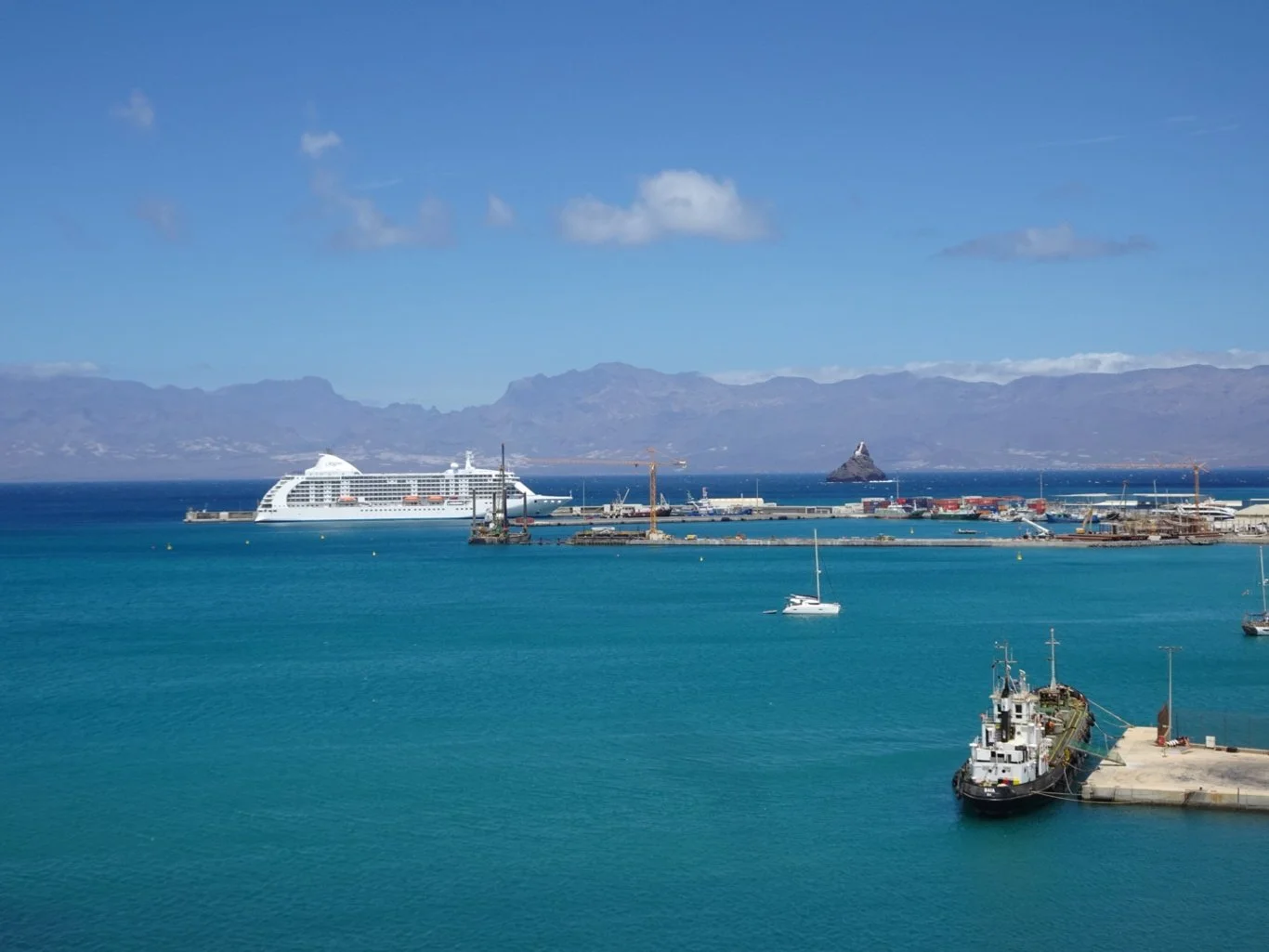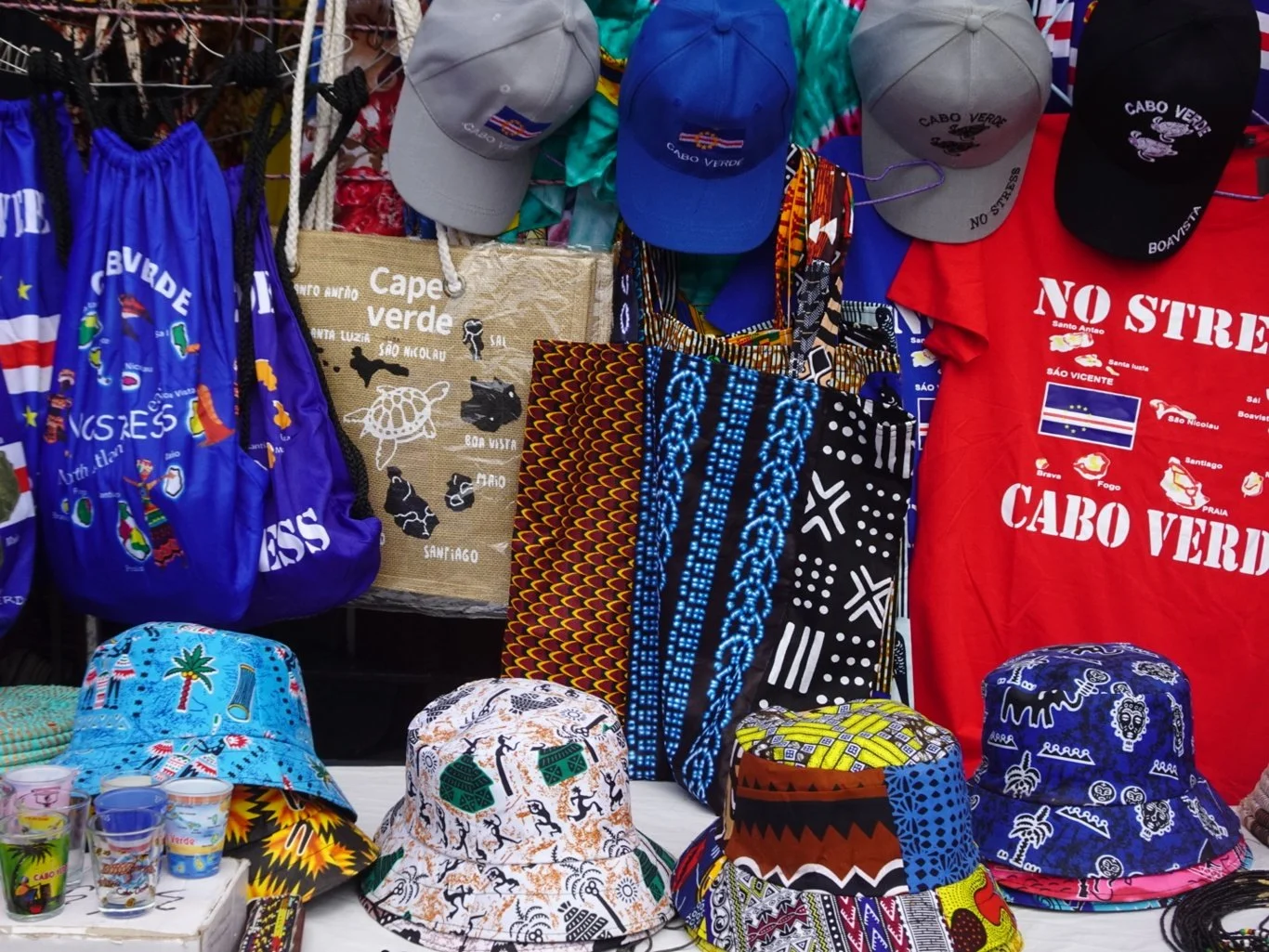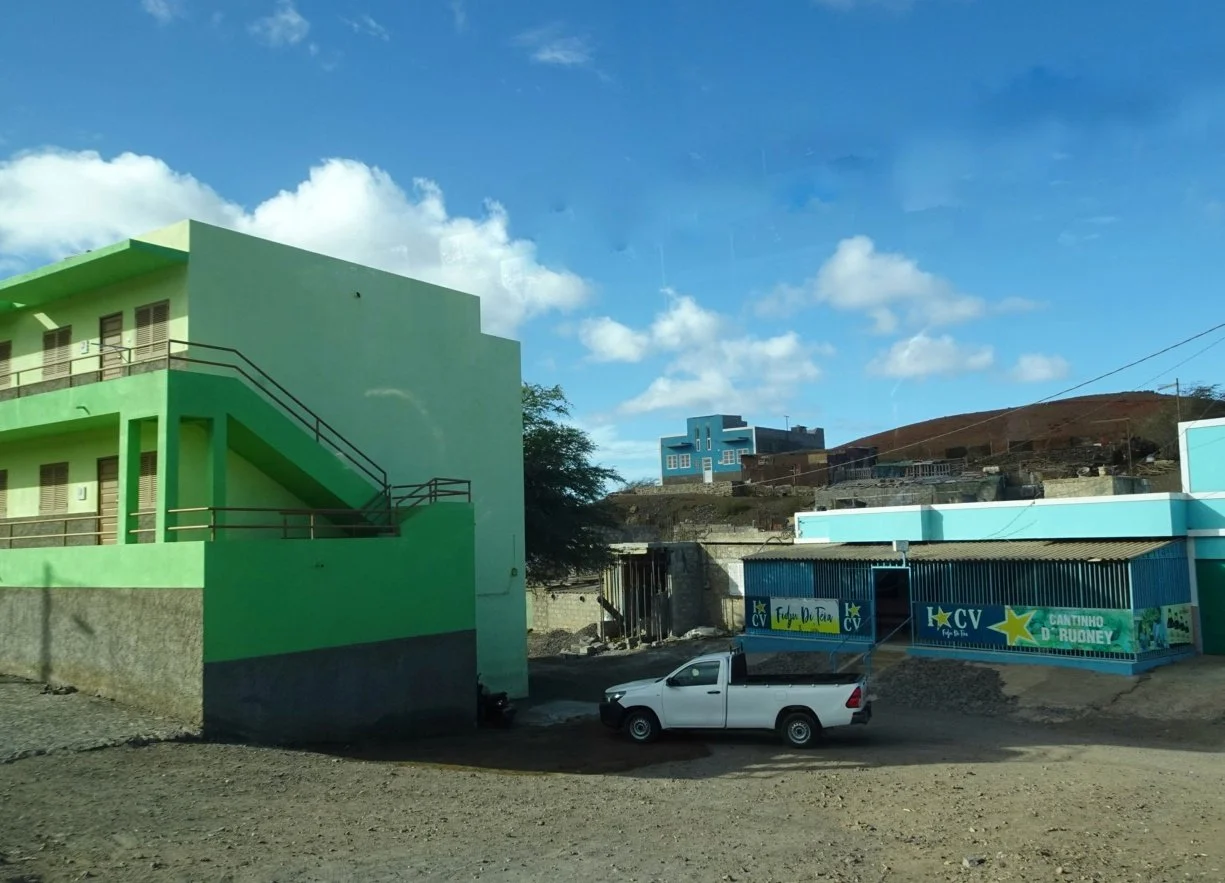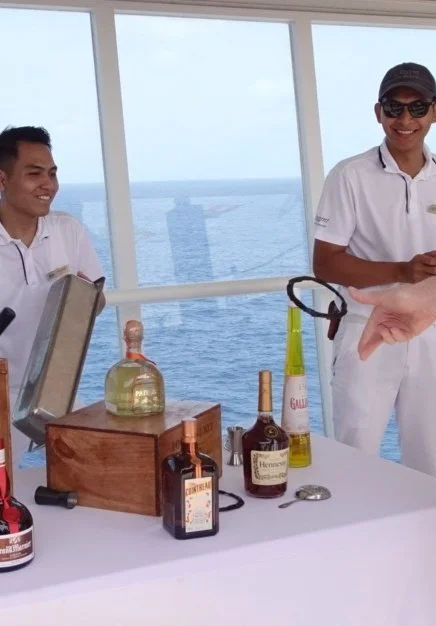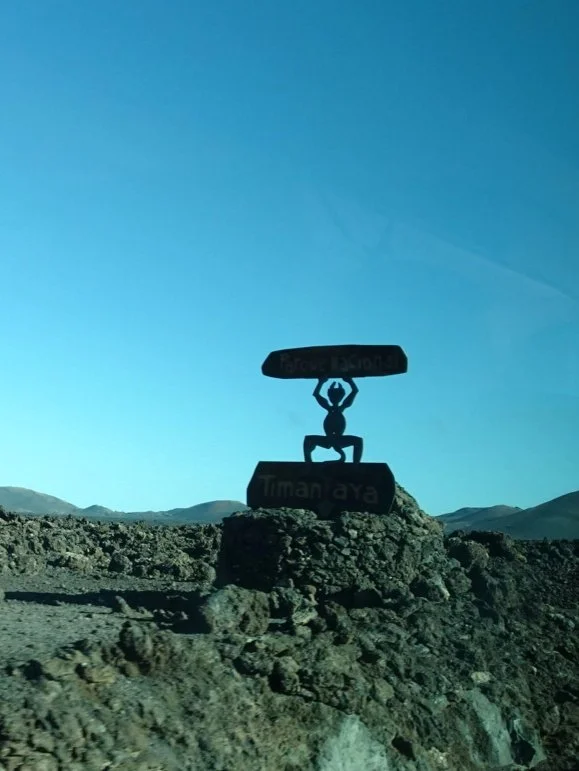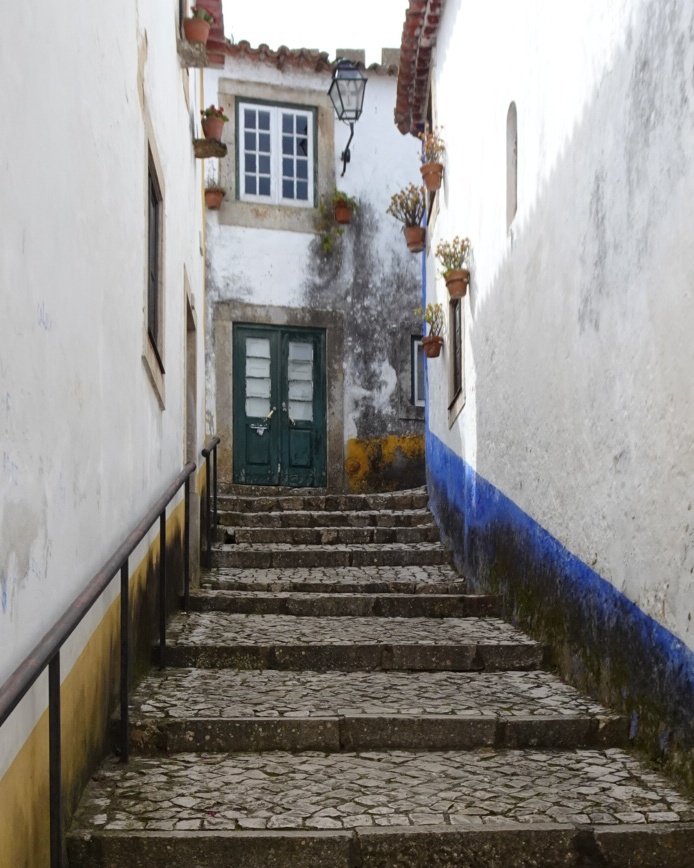Painted houses and washing lines
We arrived in Mindelo, the major port of Cape Verde today and our morning was spent exploring a corner of the island of São Vicente. We chatted to Belinda, one of the coffee shop staff this morning and asked if she planned to go ashore. “Oh yes” she said, “I've heard there are great beaches here and I'm going to spend my free time there on the white sand everyone tells me about”.
Our first stop was right there in the harbour, by the statue of the explorer Diogo Alfonso. Good Friday today, so the town was quiet and the market closed for the holiday.
We wasted no time in driving through the town and were soon out in the suburbs where the brighly coloured painted houses stood alongside those still in in construction. There was little traffic and just a few people out and about.
The road turned sharply right and soon we were heading uphill to the summit of Monte Verde, the highest point on the island. The road changed from the tarmac surface to one of cobblestones when we entered the National Park and our somewhat basic minibus shuddered along, the engine straining to cope with the gradient and the hairpin bends.
Our first stop was at a viewpoint where the wind was so strong it was hard to catch one's breath. The views were great however, and the stiff breeze gave us clear air and a great view. The island is volcanic and the rock is dark and quite crumbly, resulting in a dusty surface.
Our guide, Lena, explained at this point that it hasn't rained here in three years. Oh my…
As we drove further up the mountain on the slightly precarious road, I looked at some of the rocks that were perilously close to my window and wondered how stable they were. If it rained now, how many of them would come loose and fall on the road?
Let's not think too much about that, eh?
At the top of the mountain were a variety of antennae and aerials, together with a small wooden hut and the one, single loo of the morning. (We had been advised that no toilet facilities were available at all, so perhaps this one could be seen as a bonus?!)
But clearly, the main feature was the spectacular views from up here. Lena pointed out Baía das Gatas our next stop, way down there.
Way over there beyond the city of Mindelo, we could see Voyager, too.
But mostly, it was an arid landcape with few plants beyond these agaves and some rather dusty acacia bushes.
Driving back down, we noticed houses here and there, most of which appeared to be empty or abandoned. How do people make a living here?
One answer was a little further along the road. A young man was herding a small bunch of goats to who knows where: we hadn't seen anything vaguely like a farm or smallholding around here.
A few minutes later we were back down at sea level, entering the town we'd seen from up there on the mountain, Baia das Gatas which Lena translated as Shark Bay.
Not only were the houses a bit smarter here, this seemed to be a popular place with families, for it's a holiday weekend, after all. The wide beach is a location for a music festival, we learned, and Lena spoke of Cape Verdean music - I have an example in my CD collection at home, of Cesária Évora , the most famous Cape Verdean singer of all.
Though some of the beach was smooth and inviting, most was rather windswept and less attractive. Plus, with the name of this place uppermost in my mind, I'm not sure I'd be hurrying to get into the water here either!
The beaches a little further along the road looked far more inviting, though the volcanic nature of the landscape here made them a little rocky in places. That, together with the strong Atlantic current, meant they were probably not the best places to play and swim either. I thought of Belinda and wondered if this was the kind of beach she had been hoping for this morning?
I spotted a small jetty on this headland and wondered how it might be used. Fishermen perhaps? The water looks a bit too lively to land a small boat there I would think.
We found some of these small boats around the corner in a more sheltered spot. The fisherman's job of taking one of these small rowing boats out (as a child in Yorkshire, we'd have called them “coggy boats” or “coggies” ) can't be easy though, can it?
We came to a stop a little further on and I took a guess at the signpost that was there by the beach entrance. Turtles?
Lena led us along the rocky beach and we peered into the rockpools for life. Nothing to be seen though.
The turtles were there in a small pool outside a wooden building and were “rescued”. Both had names, one was blind and the other had lost a fin in a shark attack.
Knowing the vast distances these creatures swim when out in the wild, I felt sad to see these two in such a small pool here, swimming round and round as we snapped photos. When Lena said they'd been here for thirty years or more, it didn't help. Poor turtles.
We turned inland again to drive back toward Mindelo, taking a route through the “agricultural valley”, formerly the scene of small market gardens growing crops for sale at local markets. With three years drought, however, many of these small businesses had not survived and we passed the empty shells, some with “se vende” painted upon them. It was clear to see the effects of irrigation, for in some places, a well had been dug and a windmill pumped the water to the surface. But mostly, this was a dusty, forlorn kind of outlook.
Back in town, we had a couple more stops to make. Firstly, at a viewpoint high about the harbour, from where we gazed at the incredibly azure water around us.
Our final stop was at the African Market. Lena had reminded us right at the start of her presentation that we were in Africa, here, for Cape Verde is an African country, settled by people from Africa from its origin. The links with Portugal are clear, however, not least in three blue and white tiled panels on the wall adjacent to the marketplace.
It being Good Friday, few stalls were open and of those which were, most were aimed fairly and squarely at tourists. I took a quick look around, snapped a few pictures and returned to our bus.
As we turned the corner to enter the dock gates I looked to my right where there was the most beautiful sandy beach with that azure water lapping the shore. I guessed where Belinda had spent her day and felt pleased that she will take home a rather different picture of Sao Vicente than I will.
The picture in my mind will be of a bleak and rather barren landscape where the painted houses and lines of brightly coloured washing drying in the breeze provided welcome pops of colour. I wonder if my image would have been different had the produce market been open? Or if we'd been here on a normal working day? Heard music and had a chance to interact with the people here?
I think it probably would.







